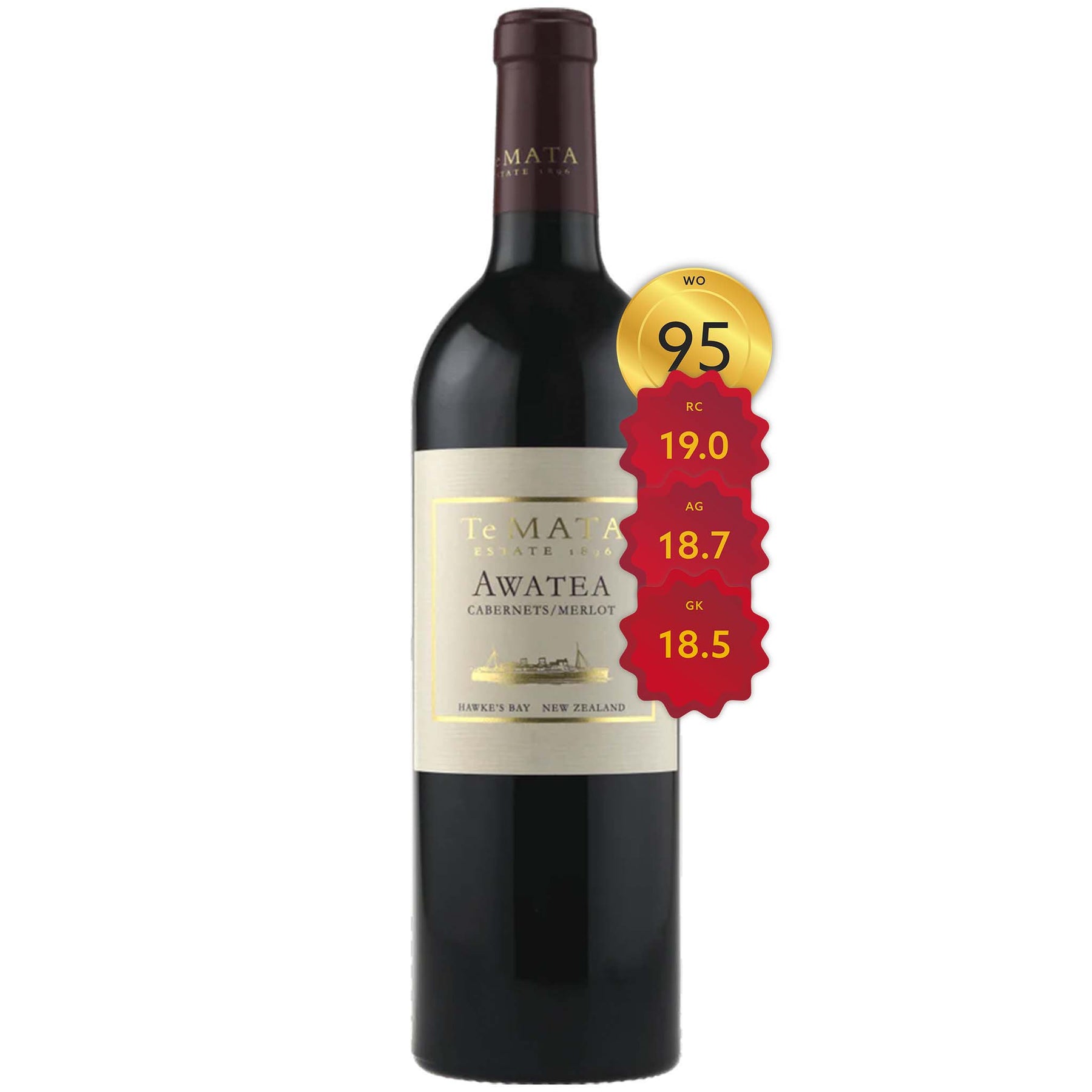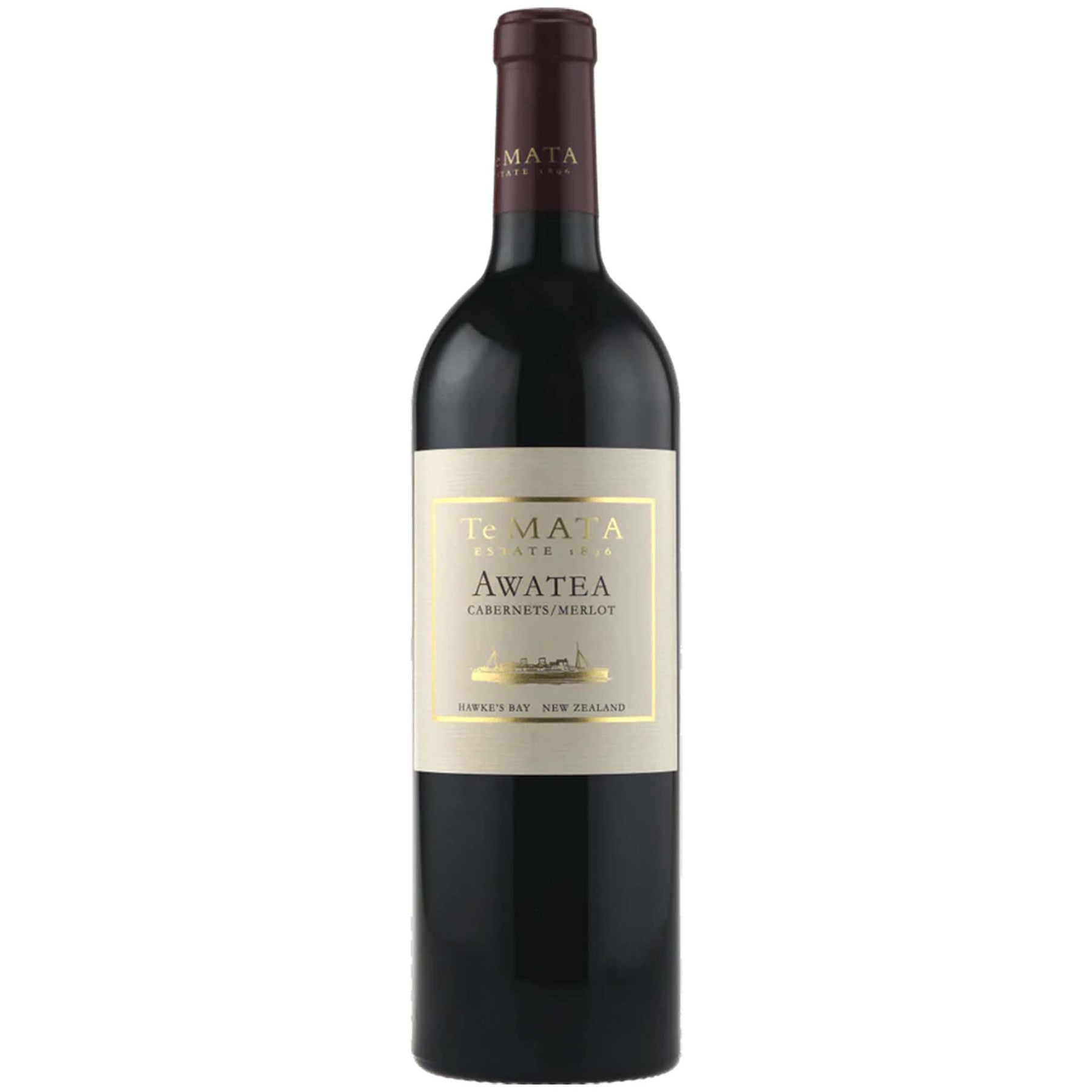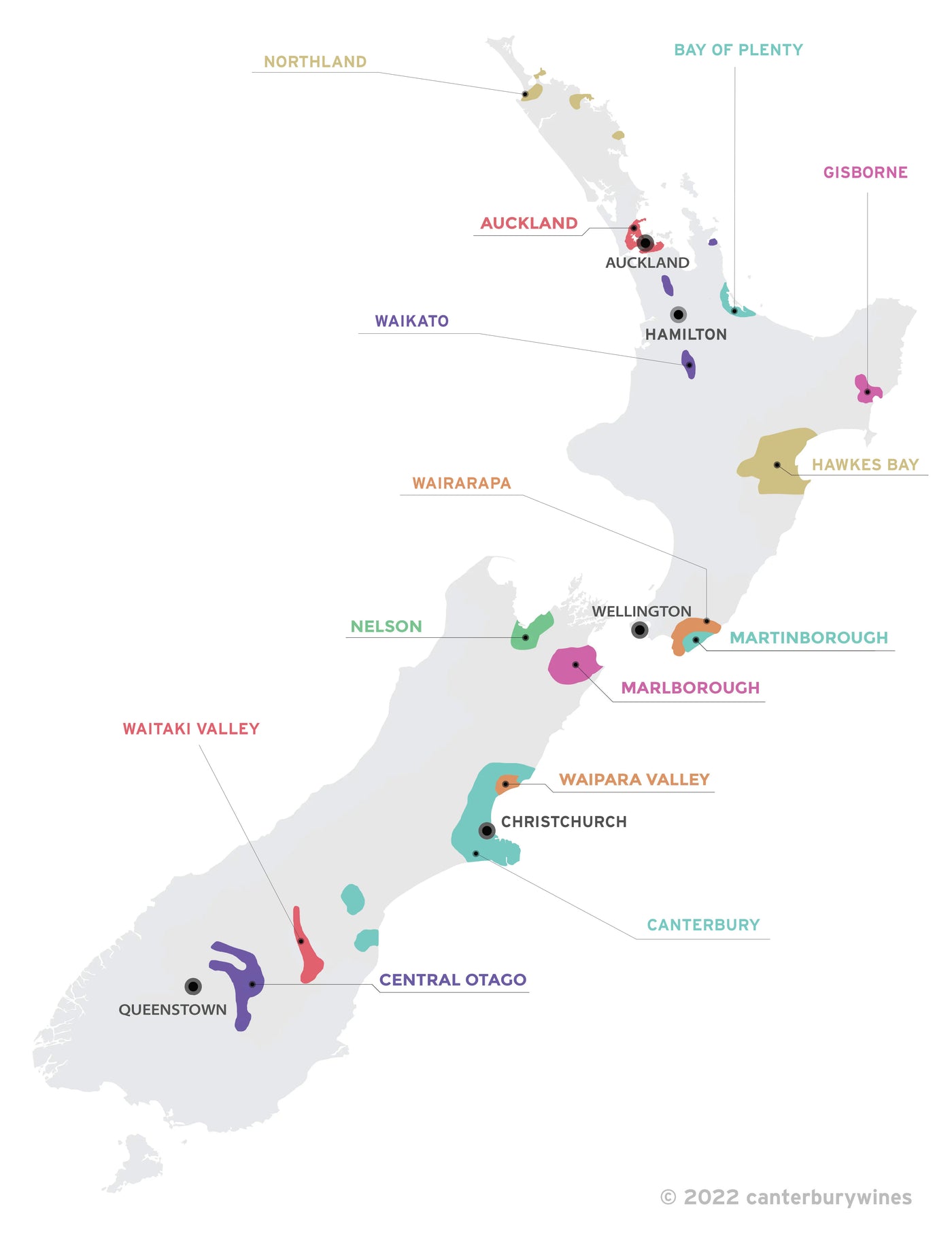

Te Mata Estate Awatea Cabernet Merlot 2007
Style: Red Wine
Closure: Cork
Te Mata Estate Awatea Cabernet Merlot 2007
Warehouse
34 Redland Drive
Vermont VIC 3133
Australia
Critic Score: 19/20 and 95
Alcohol: 14.0%
Size: 750 ml
Drink by: 2030
Te Mata Estate was established in 1896, specialising in high-quality wines of classical style. The winery remains family owned, producing internationally recognized wines exclusively from its Hawke's Bay vineyards. Te Mata produce two classic blends of cabernet sauvignon, merlot and cabernet franc; Coleraine which is regarded by many as New Zealand's finest red wine and its younger brother Awatea.
"Brilliant. The first sniff is just Cabernet blend glory. Its an opulent nose, that simply smells... absolutely perfect. The palate then is suitably dry, with cloves, spice & black fruit, the tannins drying the whole palate down, reminding not to get too carried away just yet, for the best is yet to come. It tastes long, lean, balanced and perfectly right, everything in its right place. Beautiful wine." Andrew Graham
The 2007 Awatea is a blend of 40% cabernet sauvignon, 38% merlot, 17% cabernet franc and 5% Petit Verdot.
Te Mata Estate Winery
Expert reviews
"Of all the new Te Mata wines, it is the 'Awatea' that has made the biggest leap forward. A blend of 40% Cabernet Sauvignon, 17% Cabernet Franc, 38% Merlot and 5% Petit Verdot, aged for 20 months in new and seasoned French oak, this has a black-purple red colour with beautifully ripened black and red fruits in the currant spectrum on nose and palate, as in top classed growth Bordeaux. The concentration and tannin structure are classical, and the wine's elegance is highlighted by the extremely long finish. Outstanding for its poise between full ripeness and finesse, this will age effortlessly over the next two decades." Raymond Chan – 19.0/20 points ★★★★★
"Brilliant. The first sniff is just Cabernet blend glory - all currants and blackberries, the aromas of dark little berries with thick skins, just full of concentrated perfume, including nuances of leather, mens aftershave and voilets - all the classic Cabernet tickboxes. Its an opulent nose, that simply smells... absolutely perfect. I often find the Awatea more appealing on release, with this aromatic wine definitely the more easily seductive drink on the night. The palate then is suitably dry, with cloves, spice & black fruit, the tannins drying the whole palate down, reminding not to get too carried away just yet, for the best is yet to come. It tastes long, lean, balanced and perfectly right, everything in its right place. Beautiful wine, I'd drink this whilst you wait for the wine below to mature, but with plenty of time to stop and enjoy the ride." Andrew Graham, Australian Wine Review – 18.7/20 points
"One of the best Awatea ever made, this classy red offers spectacular complexity: dark fruits, roasted meat, cigar and earth aromas. The wine is elegantly expressed yet powerful and persistent with outstanding mid palate weight and texture, leading to a super-long finish. Tannins are fine and chalky, and beautifully integrated. A blend of 40% cabernet sauvignon, 17% cabernet franc, 38% merlot and 5% petit verdot. At its best: now to 2020." Sam Kim, Wine Orbit – 95 points
"Ruby, carmine and velvet, scarcely distinguishable from 2007 Coleraine. This is the sweetest, ripest and finest Awatea in years, maybe ever. In some ways it is more charming than the same year Coleraine, at least at this stage and in the sense it is not quite so new oak-influenced and rich, and will thus be accessible earlier. But in terms of pinpoint cassis character, florality, and Bordeaux styling, this is a lovely wine. The advent of 375 ml bottles is inspired – and should introduce many more people to the fact that the best New Zealand cabernet / merlot is world-class wine. A pity our grasping restaurateurs do not cellar wines, so their customers could more readily appreciate that. Cellar 5 – 15 years, maybe longer. VALUE." Geoff Kelly Wine Reviews – 18.5/20 points ★★★★★
"Te Mata Estate Coleraine is arguably New Zealand 's greatest red wine. Certainly, it's been produced for a long time, 26 vintages, and has been at or near the totem most of that time… You expect a mind-bending wine with Coleraine. But the '07 Awatea is the more startling, because it's probably the best Awatea yet – certainly the best I can recall. It is more accessible, less tannic, more fruit driven and full of charm, especially if you give it some air. Very good concentration, soft tannins, moderate oak and, like Coleraine, superbly ripe fruit flavours in the dark-berry spectrum, without any herbaceousness. I'd expect it to also cellar 15 years." Huon Hooke, The Sydney Morning Herald
"Bordeaux character to the smoky, slightly leathery scent. The smokiness carries through to the full-bodied palate with ripe cassis-like fruit, mocha, chocolate, spice, currants, a firm backbone of rich dry tannins and sweet oak on the succulent finish. An impressive Hawkes Bay red that could challenge even the Coleraine. 14% alc." Sue Courtney, www.wineoftheweek.com
About the winery

Te Mata Estate was established in 1896, specialising in high-quality wines of classical style. The winery remains family owned, producing internationally recognized wines exclusively from its Hawke's Bay vineyards.
"New Zealand's first growth" - Andy Howard MW, Decanter Magazine
"A national treasure" - Jancis Robinson MW
"New Zealand's greatest winery" - Robert Parker's Wine Advocate
Te Mata Estate was originally part of Te Mata Station, a large pastoral land-holding established by English immigrant, John Chambers, in 1854. After returning from France, John Chamber's third son, Bernard, had the idea to plant vineyards on the north-facing hills around Havelock North. In 1892 he planted vines on three parcels of hillside land above the homestead and began converting the original stables to ferment and mature the wines. The first vintage wines were released in 1986. Today, Te Mata Estate still uses those same three vineyards.
The Chambers family sold the property in 1919. The property had two other owners until John and Wendy Buck acquired Te Mata Estate in 1978 and instigated a twenty-year development program, which commenced with the restoration of the original winery building and the replanting of all of the original vineyards. In addition, new vineyard sites were acquired in the Bridge Pa, Gimblett Gravels and Dartmoor Valley sub-regions of Hawke's Bay (refer map below). The Buck family have been producing Te Mata wines ever since. The success of Te Mata's wines in the '80s is credited with sparking the revival of Hawke's Bay as a top wine region.

Te Mata Estate Winery and Hawke's Bay sub-regions

New Zealand
New Zealand is home to more than 700 wineries across 14 wine regions. The regions are Auckland, Bay of Plenty, Canterbury, Central Otago, Gisborne, Hawkes Bay, Marlborough, Martinborough*, Nelson, Northland, Waikato, Waipara Valley, Wairarapa and Waitaki Valley. * Martinborough is a sub-region of Wairarapa, however, as it is world renowned it is considered here to be a region to avoid confusion.
The wine regions in New Zealand stretch from latitudes 36°S (Northland) in the north (comparable in latitude to Jerez, Spain), to 45°S (Central Otago) in the south (comparable in latitude to Bordeaux, France). New Zealand's climate is maritime, producing cooler summers and milder winters than would be expected at similar latitudes in Europe.
Viticulture in New Zealand dates back to 1836 when British resident James Busby produced wine in the far north, but it wasn't until 1985 that the wine industry came of age when Cloudy Bay Sauvignon Blanc garnered international attention and critical acclaim.
New Zealand is internationally renowned for Sauvignon Blanc (particularly from Marlborough), Pinot Noir (Central Otago, Martinborough and Waipara Valley), Chardonnay, Bordeaux-style blends of mainly Merlot and Cabernet Sauvignon (Hawkes Bay) and Syrah (Hawkes Bay). Sauvignon Blanc accounts for 63% of the area of the national vineyard, followed by Pinot Noir (14%), Chardonnay (8%), Pinot Gris (7%) and Merlot (3%).


